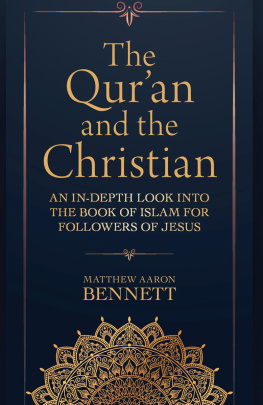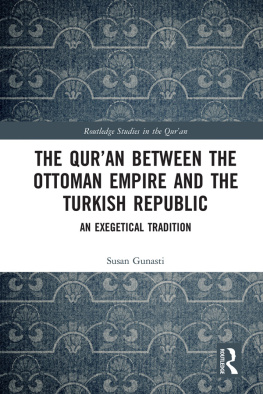
Table of Contents
List of Illustrations
- Maps
- Chapter 02
- Chapter 03
- Chapter 04
- Chapter 05
Guide
Pages
Wiley Blackwell Brief Histories of Religion Series
This series offers brief, accessible, and lively accounts of key topics within theology and religion. Each volume presents both academic and general readers with a selected history of topics which have had a profound effect on religious and cultural life. The word history is, therefore, understood in its broadest cultural and social sense. The volumes are based on serious scholarship but they are written engagingly and in terms readily understood by general readers.
Other topics in the series:
Published
| Heaven | Alister E. McGrath |
| Heresy | G. R. Evans |
| Death | Douglas J. Davies |
| Saints | Lawrence S. Cunningham |
| Christianity | Carter Lindberg |
| Dante | Peter S. Hawkins |
| Love | Carter Lindberg |
| Christian Mission | Dana L. Robert |
| Christian Ethics | Michael Banner |
| Jesus | W. Barnes Tatum |
| Shinto | John Breen and Mark Teeuwen |
| Paul | Robert Paul Seesengood |
| Apocalypse | Martha Himmelfarb |
| The Reformation | Kenneth G. Appold |
| Utopias | Howard P. Segal |
| Spirituality, 2nd Edition | Philip Sheldrake |
| Cults and New Religious Movements, 2nd Edition | Douglas E. Cowan and David G. Bromley |
| Islam, 3rd Edition | Tamara Sonn |
Islam
History, Religion, and Politics
Third Edition
Tamara Sonn
This edition first published 2016
2016 John Wiley & Sons, Ltd
Registered Office
John Wiley & Sons, Ltd, The Atrium, Southern Gate, Chichester, West Sussex, PO19 8SQ, UK
Editorial Offices
350 Main Street, Malden, MA 02148-5020, USA
9600 Garsington Road, Oxford, OX4 2DQ, UK
The Atrium, Southern Gate, Chichester, West Sussex, PO19 8SQ, UK
For details of our global editorial offices, for customer services, and for information about how to apply for permission to reuse the copyright material in this book please see our website at www.wiley.com/wiley-blackwell.
The right of Tamara Sonn to be identified as the author of this work has been asserted in accordance with the UK Copyright, Designs and Patents Act 1988.
All rights reserved. No part of this publication may be reproduced, stored in a retrieval system, or transmitted, in any form or by any means, electronic, mechanical, photocopying, recording or otherwise, except as permitted by the UK Copyright, Designs and Patents Act 1988, without the prior permission of the publisher.
Wiley also publishes its books in a variety of electronic formats. Some content that appears in print may not be available in electronic books.
Designations used by companies to distinguish their products are often claimed as trademarks. All brand names and product names used in this book are trade names, service marks, trademarks or registered trademarks of their respective owners. The publisher is not associated with any product or vendor mentioned in this book.
Limit of Liability/Disclaimer of Warranty: While the publisher and author have used their best efforts in preparing this book, they make no representations or warranties with respect to the accuracy or completeness of the contents of this book and specifically disclaim any implied warranties of merchantability or fitness for a particular purpose. It is sold on the understanding that the publisher is not engaged in rendering professional services and neither the publisher nor the author shall be liable for damages arising herefrom. If professional advice or other expert assistance is required, the services of a competent professional should be sought.
Library of Congress Cataloging-in-Publication Data
Sonn, Tamara.
Islam : history, religion, and politics / Tamara Sonn. Third edition.
pages cm. (Wiley Blackwell brief histories of religion)
Includes bibliographical references and index.
ISBN 978-1-118-97230-4 (paperback)
1.IslamHistory. 2.IslamEssence, genius, nature. I.Title.
BP50.S65 2016
297dc23
2015025659
A catalogue record for this book is available from the British Library.
Cover image: Interior of mosque, Casablanca, Morocco. Maciej Tomczak/phototramp.com/Alamy Limited
To our loving family.
Foreword
Since the publication of Tamara Sonns A Brief History of Islam in 2004 the babble of noises around Islam and the violence by and against Muslims has continued to grow exponentially. The daily news cycle invariably has a gruesome Muslim storya beheading here, a suicide bomber there, a sectarian massacre in one country, and violent demonstrations in another.
The problem is not that there is not sufficient material on Islam; the problem is that there is too much. We suffer a bombardment of opinions on Islam through round-the-clock information networks, which now include social media with its Twitter, Facebook, etc. We are thus privileged to glimpse the innermost thoughts of just about everyone on the subject of Islam.
That is why we yearn to hear the calm, authoritative voice of the scholar whose task is to study history, its events and actors, the origin and development of ideas, and on the basis of reflection and analysis throw light on contemporary society. Professor Sonn is that voice.
Since her Brief History of Islam was published a decade ago, Sonn has consolidated her reputation as a major public intellectual, successfully balancing her scholarship with the need to explain complicated issues in clear and accessible terms. This new volume not only updates her Brief History but also adds substantial material to it. There is a new final chapter, Contemporary Islam, which gives brief but detailed insights into several key Muslim nations including Turkey, Iran, Pakistan, and Indonesia. In addition there is fresh material on the Arab Spring and its consequences for the world. In the violence since the War on Terror began, Sonn points out that well more than a million lives have been lost in the main theaters of war in Afghanistan, Iraq, and Pakistan. The overwhelming numbers of those who have been killed are Muslim.
Professor Samuel Huntington of Harvard University claims in his Clash of Civilizations proposition, which was published just two decades ago, that Islam and the West are doomed to be locked in a long-running confrontation and that has had a global impact. After 9/11, commentators looking around for an answer to the question, Why do they hate us? found it in the idea of the Clash of Civilizations. Huntingtons notion, indeed even the phrase, was borrowed from Professor Bernard Lewis at Princeton University. The idea of a perpetual clash between Western and Islamic civilizations is a powerful one and is reflected in history if it is seen from a certain angle. But it is also reductive and simplistic in the extreme. Take an example from the earliest encounter between the West and Islam in which alliances cut across religious lines. Charlemagne, the dominant Christian ruler of Europe, allied with the Caliph in Baghdad against their common enemy, the Muslim ruler of Andalusia. Examples such as this can be found throughout history to challenge the idea of a Clash of Civilizations.
Next page














